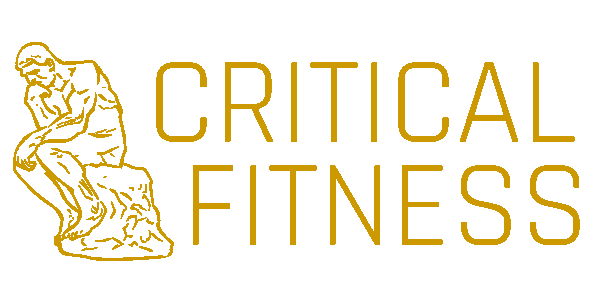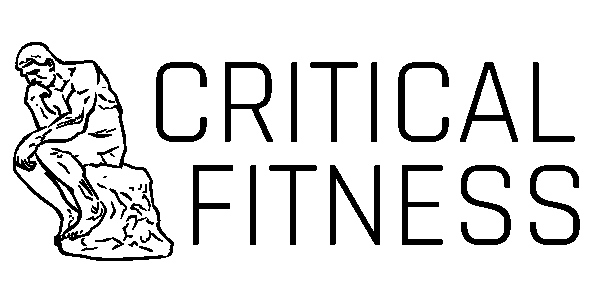How do personal trainers prescribe exercise for weight loss?
You would think this is the simplest question for a personal trainer to answer. Is it effective to do weights training for weight loss?
But we’ve mentioned this before. Put 100 personal trainers in a room, and ask them to agree about a fundamental principle of exercise programming, and we will struggle to reach an agreement. Herding cats will be easier.
The same applies when talking about weight loss. They will agree on a few basic principles. Most will agree that reducing your energy intake is part of a weight loss program. And most will agree that increasing your energy expenditure through exercise is also helpful.
But how to go about it? That’s where we will have arguments.
Where does weights training come into this?
As part of an exercise program, trainers will also often recommend weights training. Cardio training can be boring for some people. Trainers often think so too. Rather than doing something repetitive like jogging, some of us would rather do something more varied and interesting.

Cardio? More like cardi-no… am I right folks?
Weights training fits the bill. The exercises change regularly, and the trainer can interact with the client more, providing feedback and guidance. And for some of us it feels a lot more comfortable than going for a jog.
And the reasoning is this: muscle mass requires energy to maintain it. So if we lift weights and increase our muscle mass, our resting metabolic rate (RMR) increases. So, we burn more energy 24 hours a day, not just in the 30 or 60 minutes we have for exercise.
How effective is weights training for weight loss?
RMR is an important component of energy expenditure, that’s true. But our weights training probably doesn’t have the impact on weight loss that many trainers think it does.
Changes in RMR can absolutely lead to improved weight loss. And our exercise can increase our RMR. But the opposite is also true, and our training can be counter-productive. If we train too hard, or severely restrict our energy intake, we can reduce our RMR, maybe having a negative impact on weight loss.
And changes in lean muscle mass don’t the impact on metabolism we might think – only about 100 kJ per kg, per day. That’s about 10.5 calories per pound of muscle.
Muscle mass, while more metabolically active than fat mass, is less metabolically active than other lean tissues (such as organs), requiring less energy to maintain it.
Then consider the effect of our weight loss. When losing weight, we are usually in an energy deficit. This makes gaining extra muscle mass more difficult. As most of us are usually looking for to reduce our body fat levels when exercising and eating well, we would only reasonably expect a small increase in muscle mass with training.
Now there’s some new research…
In January 2019 some new Australian research was published that adds to what we know about this. The main aim of this research was to assess the accuracy of estimations of RMR in athletes – there are a number of calculations that we can use to predict this, based on data collected from the general public.
These researchers used DEXA scans to determine the body composition of a group of 18 young elite rugby players, at the beginning of their preseason. Their RMR was also assessed.

A team of athletes make a great participant group. They are more similar to each other than normal general public groups. This removes variables that might otherwise influence results
They were assessed again just before the start of their season, after 14 weeks of training. Players made no change to their usual training and diets during this period. This training involved weights training, running, and rugby skills.
The players had a significant increase in lean body mass (an average of about 1.5 kg), and a reduction of about 1/2 kg of body fat. But there was no change in RMR.
The proposed change in RMR is the main reason personal trainers use weights training as part of a weight loss training program. A lot of trainers. Myself included, back when I doing a lot of personal training!
But it seems as though the impact of training (in this case a combination of weights and running) on metabolism is small. And the relationship between muscle mass and RMR is not as clear cut as we think.
But these are rugby players, not my clients!
True, these participants were not the usual personal training client. But they are a convenient group to study for a number of reasons.

Our average personal training clients look more like this couple than the rugby players described above
Firstly, they have a period where they don’t do a lot of training (their off-season). This is something in research we call a washout period, as it reduces the impact of other exercise. If you spend a lot of time starting or stopping different weight loss interventions, and they overlap or follow one another, it’s hard to measure the impact of one alone.
Secondly, they train hard, frequently, and consistently. They will be more regular exercisers than many of us because performance, selection and match payments may be influenced by their training effort and consistency. And they will train harder. So the impact of the exercise program will be more noticeable than many other populations.
So no, they are not the types of clients you will usually see in the gym, but that doesn’t mean we should ignore the results. That may be a positive in this case.
So what?
This research doesn’t change everything – it’s one study, with 18 participants. But it builds on an existing body of research. This research tends to be separated into that which looks at cardio training, or resistance training, something that wasn’t done in the study described above.
The evidence looking at cardio training is clear. While one study showed changes in RMR of up to 600 kJ, others show no change in exercise programs ranging from 3 months to 12 months. Body fat levels decreased, and muscle mass increased, in most of these studies, but the effect was small. And some exercisers compensate for the increase in structured exercise by being less active in the rest of their day!
Resistance training seems to be slightly better when you look at other research. Results have ranged from no change in RMR, to an increase of 1000 kJ per day.
But don’t get too excited about the 1000 kJ, otherwise you may be guilty of cherry picking evidence to suit your argument (we discuss this in a previous article). This seems to be an outlier, as the consensus of the research is much lower, as we’ll discuss soon.
And keep in mind your RMR may even decrease when you start exercising and eating well. Why? Because you are losing body fat, so have less overall weight to maintain. Yes, fat is less metabolically active than muscle, but it still needs energy to maintain it.

Don’t be the guy that reads this whole article, then picks out the one piece of information that supports your already held opinion.
Even newer research on RMR adds to our knowledge of weights training for weight loss
Bond University’s Dr. Kristen MacKenzie-Shalders, the lead author in the research into rugby players described above, has published some new research which collates what we know about the effects of exercise on RMR. They reviewed the findings of 22 studies, with over 800 participants.
Any what did they find? Aerobic exercise alone did not result in a significant increase in RMR. Resistance training did, of about 400 kJ. There was not a significant effect of weight gain, or loss, on RMR. And although most researchers accept that in principle increased muscle mass should result in an increase in RMR, it wasn’t clear in this study.
Why this disconnect between body composition and RMR?
Partly, because of the different ways body composition is assessed in the research. Not all the studies used the expensive gold standard DEXA scan.
And partly because there are a range of physiological and genetic factors that effect our metabolism, such as variations in thyroid function and our body’s heat production, to name just a couple. It’s not just about body composition.
So is weights training for weight loss a misconception?
Most exercise misconceptions come from a kernel of truth, that has been exaggerated or misinterpreted, and it appears that this is the case when discussing weights training for weight loss, too.
Weights training will lead to a small increase in RMR for most people. But this may not lead to any noticeable change in their body composition. And while it may contribute in a weight loss program, a combined approach including some other strategies will probably lead to the best.
For example, do not neglect cardio training. An added benefit of prescribing cardio training is the amount of energy you expend during a session. This can have an impact on weight loss even if your RMR is not changed.
We can measure how vigorous an activity is by looking at the METs (or metabolic equivalents) expended. Sitting quietly will expend about 1 MET. Vigorous weights training gets us up to about 6 METs, while a steady jog gets us to 9 METs, and there are plenty of other exercise options.
And it’s also clear that without changes to your diet, achieving lasting weight loss will be challenging. Exercise professionals can help by providing nutrition advice, within their scope of practice. This is something not all trainers stick to, as discussed elsewhere, so choose your trainer carefully.
If someone is overweight, with no medical complications, then basic advice will do the trick. After all, if they were eating healthy foods in appropriate quantities, they probably wouldn’t be asking for our advice!
The take home message?
Exercise in general, and weights training specifically, have plenty of great benefits. But do not oversell it. For an effective weight loss approach, we need to take a more holistic view. Look at nutritional advice, and where appropriate, personal trainers should refer to a more qualified professional for extra guidance.
Note:
This article was first published on the 27th of May, 2019. This article was updated to include the meta-analysis by MacKenzie-Shalders et al. (2020), and republished on the 12th of July, 2020.



Recent Comments